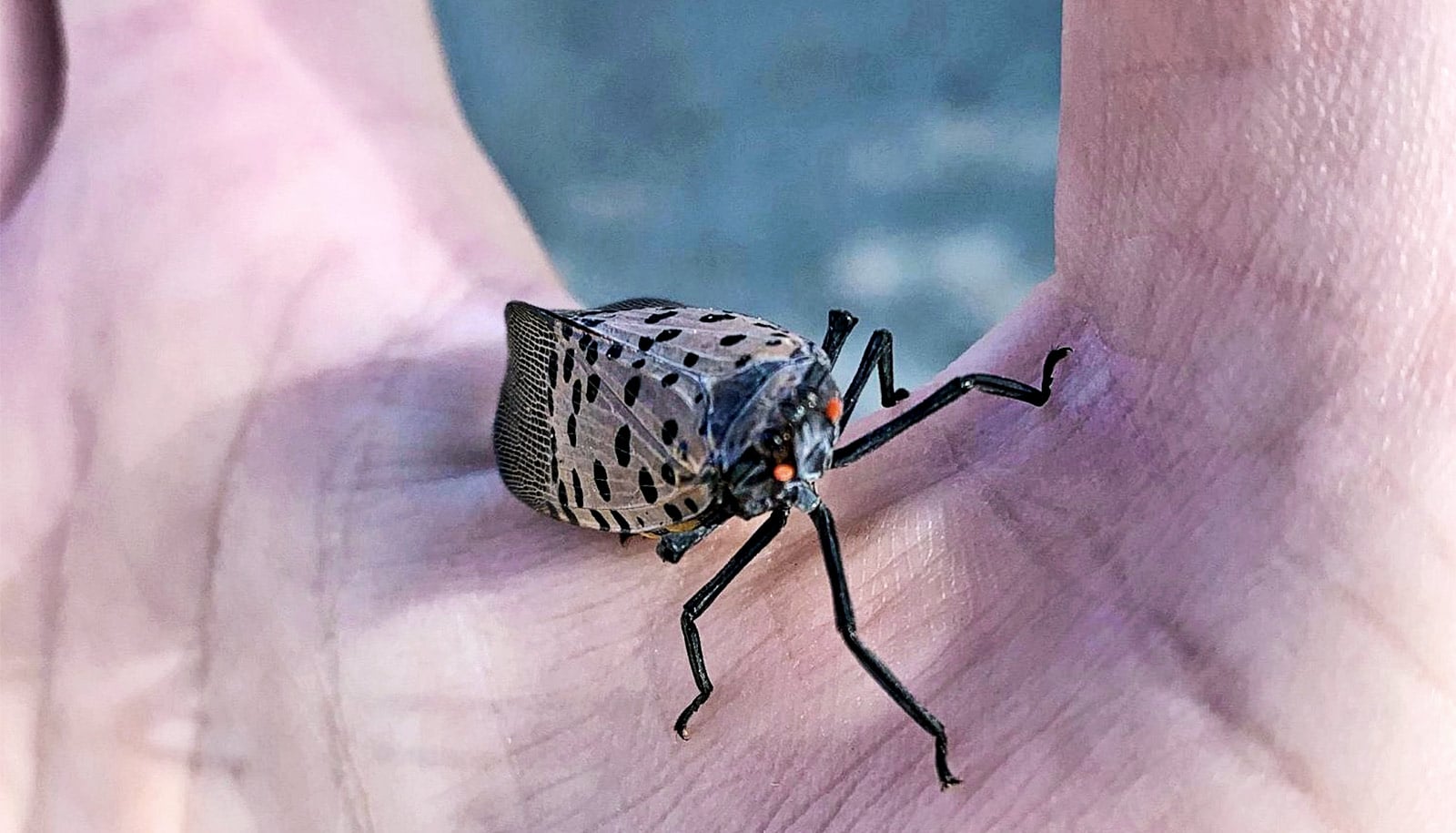
"Currently, spotted lanternflies are concentrated in the eastern portion of the nation, but they are predicted to spread to the whole country," says Carolyn Alex. (Credit: Getty Images )
Robot goes after spotted lanternfly eggs
An autonomous robot could help control the spread of invasive spotted lanternflies by destroying their eggs.
Researchers have developed an autonomous robot to control the spread of spotted lanternflies, invasive insects known to destroy crops.
TartanPest uses an all-electric tractor, a robotic arm, and computer vision to traverse fields and forests while it detects and destroys spotted lanternfly egg masses. The egg masses—which contain 30-50 eggs and are often found on trees, rocks, outdoor furniture, and rusty metal surfaces—are laid in the fall and hatch in the spring, birthing a new generation of the pests each year.
“Currently, spotted lanternflies are concentrated in the eastern portion of the nation, but they are predicted to spread to the whole country,” says Carolyn Alex, an undergraduate researcher on the TartanPest team. “By investing in this issue now, we will be saving higher costs in the future.”
The team created TartanPest by mounting a robotic arm to the base of an all-electric Amiga microtractor created by California-based robotics company Farm-ng. TartanPest uses a deep learning model refined on an augmented image data set created from 700 images of spotted lanternfly egg masses from iNaturalist to identify them and scrape them off surfaces.
Lanternflies feed on a wide range of plants and produce, including grapes , apples, hops, walnuts, and many different hardwoods. In Pennsylvania alone, they have the potential to drain $300 million from the economy annually. TartanPest could benefit small farmers and the broader food system by lowering the chemical pollution of crops, increasing efficiency on farms, and saving labor costs for farmers.
The team presented TartanPest as part of Farm-ng’s 2023 Farm Robotics Challenge.
Source: Kayla Papakie for Carnegie Mellon University
The post Robot goes after spotted lanternfly eggs appeared first on Futurity .
Share this article:
This article uses material from the Futurity article, and is licenced under a CC BY-SA 4.0 International License. Images, videos and audio are available under their respective licenses.
Related Articles:
Should you squash the invasive spotted lanternfly?
Oct. 19, 2021 • futurityCan snails save coffee from fungus? It’s a risky idea
Jan. 23, 2020 • futurityLinks/images:
- https://www.futurity.org/twitter-social-media-news-invasive-insects-2851872/
- https://www.futurity.org/spotted-lanternfly-invasive-species-crops-grapes-2750412-2/
- https://www.cmu.edu/news/stories/archives/2023/june/cmu-team-develops-autonomous-robot-to-stave-off-spotted-lanternflies
- https://www.futurity.org/robot-spotted-lanternfly-eggs-2950142/
- https://www.futurity.org


